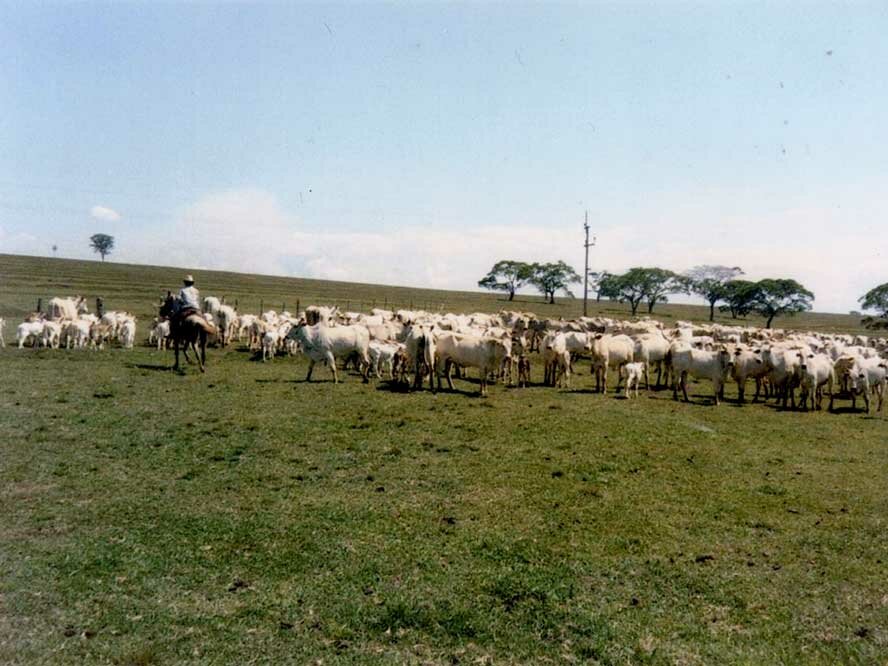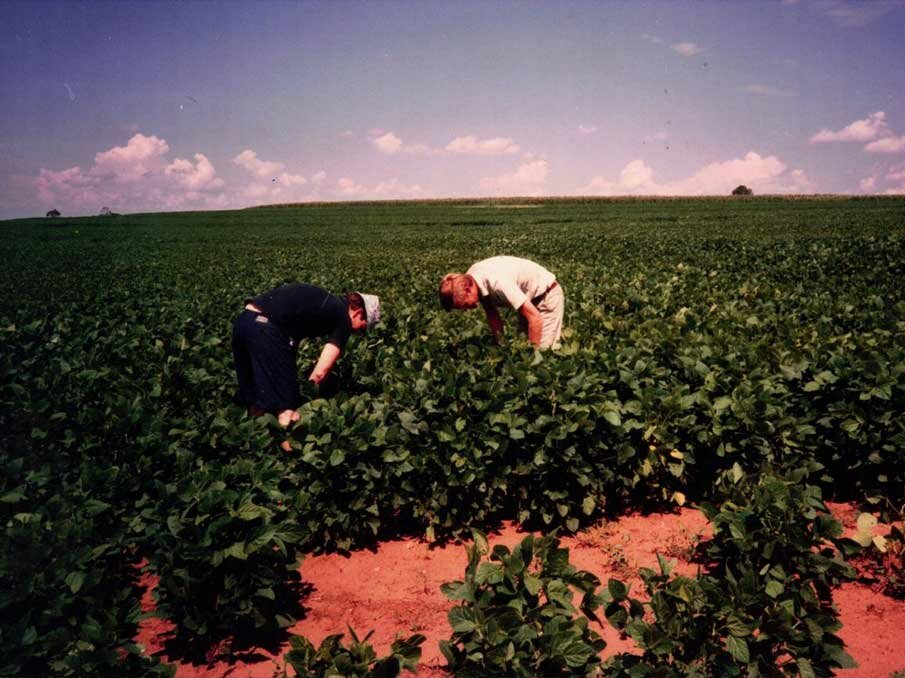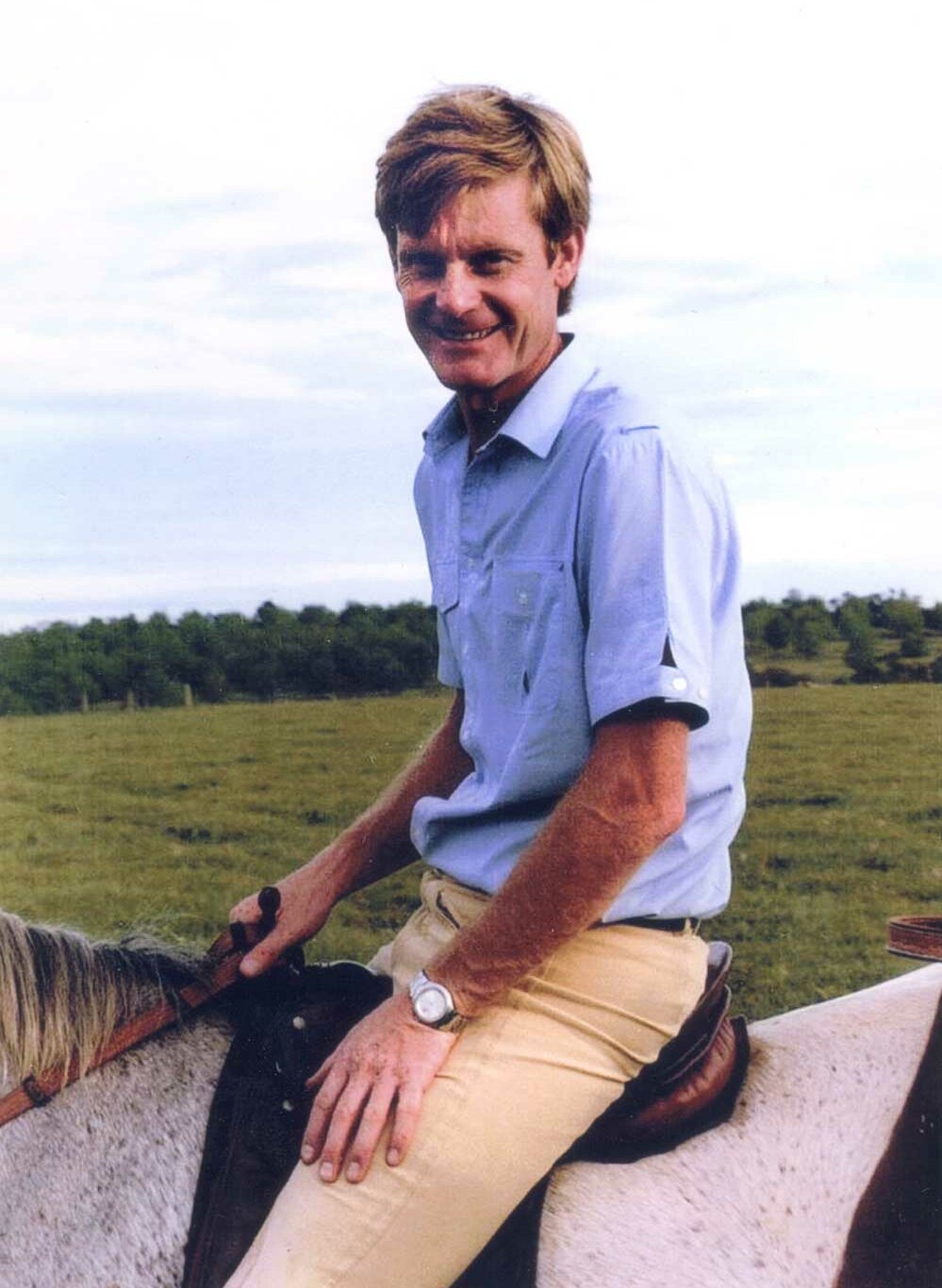From Hessen to Brazil: Dr Achim Schudt’s non-stop search for sustainable systems
By Erminia Ciarleglio, DLG
Dr Achim Schudt grew up on a German farming estate before moving out to Brazil and establishing an innovative 4,000 ha farming business, later moving on to exert considerable influence in other fields fostering agricultural links between his homeland and Brazil including those of management consultancy, educational agritourism, farm product processing and waste recycling.
Dr Schudt, you emigrated from Germany to Brazil in 1976 ...
This was following my early years on an estate in Hesse, the Hof Engelthal, on the edge of the fertile Wetterau region north of Frankfurt and after studying agriculture at the University of Giessen, gaining a doctorate under Professor Friedrich Kuhlmann, who himself was vice-president of the DLG from 2000 to 2006. Moving to Brazil gave me the chance to develop a farming business, in fact two farms totalling 3000 ha with another 1000 ha rented and running Zebu cows crossed with European breeds. By the end of the 1970s, beef prices were falling and grazing quality on the properties had been deteriorating, needing extensive reseeding. The situation encouraged me to move more into intensive crop production: field beans, soybeans, maize and wheat. Modern machinery was bought and irrigation was started on some areas.
Brazil’s expansion in arable production, mainly encouraged by German or German-origin farmers and agricultural scientists, increasingly featured direct drilling for crop establishment. And nowadays 60 % of arable production features no-till, a system that can allow two harvests per year. Later on, I joined the Dr Wolfgang Sauer management consultancy office in Brazil. The organisation’s agricultural branch encouraged development of mechanisation, sugar processing plants and soya milk products. Another project: sustainable recycling systems for waste materials.
The first DLG management visit to Brazil was organised from the offices of the Dr Sauer consultancy in 2005 and this was soon followed by other DLG-supported accompanied tours taking European experts, for example, to the country’s farm shows. Further support for similar trips came from organisations such as the German seed company KWS and the Brazilian-German Chamber of Commerce. Presentations on farming in Brazil were also arranged and reported-on for journals back home.
You became well-known for your work encouraging contacts between European and Brazilian agriculture. How did this develop?
Between 2012 and 2018 I supported the Sao Paulo office of the German Association for Small and Medium-sized Businesses (BVMW), mainly helping with company establishment in Brazil and also representing and supporting companies at appropriate exhibitions. Another highlight during this time was my organisation and management of a visiting group of specialists under the then Federal Minister for Consumer Protection, Food and Agriculture in Germany, Ilse Aigner. This visit included a forum on agriculture in Brazil. Another visiting group I helped with, and made a presentation to, was from the German Mechanical Engineering Industry Association (VDMA), agricultural engineering division. Currently, the marketing of internationally produced agricultural machinery and their spare parts throughout Brazil is a development I am involved in. Another project of mine: developing the infrastructure for efficient processing of waste products.
How competitive is Brazilian agricultural output in a global context?
Not for nothing is Brazil nowadays accepted as »the world’s granary«. In fact, agribusiness is the most successful sector of the country’s economy, even during the current pandemic. The country’s reserves are still not fully exploited, which makes it eminently capable of contributing to the steadily growing worldwide demand for food.
And such growth does not mean that rain forests in the north must be continually felled for more farming land. After all, as fifth-largest country in the world, Brazil’s farmland total of 74 m ha (66 m ha arable plus 8 m ha sugar cane area) represents less than 10% of the country’s total area. Up until 2030 it is reckoned that some 10% of extra area can be added to agricultural production purely through improving currently degraded land and re-establishing production on such areas.
Brazil has established itself as the world’s largest producer of soybeans, orange juice, coffee and sugar. For beef, it’s globally second-largest producer and for chicken meat, number three in the world. As for exporting farm produce, Brazil leads the world for soybeans, orange juice, sugar, beef, chicken meat and coffee. For maize, it’s number two in this list.
Farm products are produced more cheaply in Brazil than under European conditions. The favourable climate, biannual harvests, round-the-year grazing, simpler housing needs for pigs and poultry, automated livestock indoor feeding and, finally, best conditions for irrigation because Brazil features over 17% of worldwide sweet water reserves. Even in the years between 2006 and 2017 the irrigated area of farmland in this country expanded from 4.5 m ha to 6.7 m ha. With cane sugar, Brazil is in the position to flexibly control supply and prices to world markets for the refined food product or for »green« fuel ethanol. Competitiveness of such export crops from Brazil is only limited by serious lack of transport infrastructure inland. For instance, 75% of soya transport to export ports is via road only. Result: transport costs at least 50% more than in the USA or Argentina. Brazilian harbour fees are also more expensive than those of export competitors. Although Brazil’s agriculture economy up to the new millennium tended to be rather neglected by politics because the aim was to develop the country more as an »industrial nation«, good solid R & D in agriculture had already been established under the military regime of ethnic-Italian president Mr. Medici with the founding of the national agricultural research institute EMBRAPA. Results from this respected organisation boosted – and still invigorate - all aspects of Brazilian crop and livestock production.
There has been plenty of price support from the public, too. After all, population has steadily increased: from 120 m in 1980 to 211 m in 2020, with personal incomes also on the increase. Domestic demand for basic food products increases steadily, driven by population growth and increased incomes. This applies to organic food products too.
Starting 2003, China and neighbouring countries, as well as Arab nations, purchased food items from Brazil (soybeans, beef and chicken meat) in increasing amounts. This created permanent production and export expansion. A trend still well supported by Brazil’s naturally good production conditions, the superbly confident entrepreneurial spirit of Brazilian business and the application of the country’s farmers and »Agroindústria«.
Will digital technology bring a revolution to Brazil’s agriculture?
Yes. Even now, digital technology supports a large proportion of the country’s agricultural output. The large-scale farming businesses in the country’s mid-west as well as the very advanced family farms producing livestock for slaughter have already digitised their production processes to a great extent. Increasingly, new digital technologies in crop sowing, fertiliser application and in plant protection are being tested and applied. This is also the case for management and monitoring in large-scale livestock production with so far mainly systems from abroad applied.
Start-ups in digitisation for production systems are increasingly presented nowadays at all large agricultural shows and events. The bigger companies, e.g. Syngenta, Bayer, etc, tend to take over young promising start-ups to merge the new businesses with their own. Through the continual pressure for more production, Brazil has developed into a massive »research laboratory« for the practical application of drones, precision farming via satellite and further innovative technology in farm and food production. The newer further-processing food industry projects such as slaughterhouses are by now completely digitalised.
The country’s agriculture is very important for Brazil. Still, farmers fear drought through the destruction of the Amazon rain forests interrupting natural water cycles. How do you view this dilemma, Dr Schudt?
There’s no argument concerning the importance of agriculture for Brazil. The sector has become the »motor of the nation«. This is recognised and affirmed by those working on the land, and the general populace too. Because of its economic importance, agriculture enjoys high standing in society, above all in the eyes of the younger generations, making the sector an attractive professional career target. As well as this, there exists within the Brazilian parliament a strong so-called »rural block« of members from nearly all political parties very much concerned with the agricultural economy. There’s no doubt great apprehension in the sector regarding drought. This year (2020) brought us one of the hottest winters in the last decades, with associated large-scale forest fires, many started through arson or carelessness. In the end, only the coming of the rainy season extinguished some of these. Without a doubt, clearing areas of forest in the Amazon Basin affected the country’s microclimate. Dry periods have lengthened or rain storms more violent with resulting harvest failures and extensive damage in town and countryside.
But I feel agriculture is not the cause of rainforest clearances, nor does it support such actions. The clearances are not behind the impressive increases in agricultural production, nor will any future increases in food output be dependent on destroying forested areas. The fact is that there are more than enough degraded and little-used areas of potentially efficient farmland available for redevelopment. On the other hand, the Amazon basin on its own has the scale of a complete continent and this also means policing any burning and clearing is very difficult to control or prevent. In most cases, such felling actions are illegal. Here, the way ahead must be consistent application of legislation and stamping out of corruption. Unfortunately, legislation is too often ignored and the inadequacy of prosecuting power was, and remains, a huge problem.
In practical farming attempts to reduce the effects of aridity include minimum cultivation techniques. Moisture conservation is possible through direct drilling, also by introducing drought-tolerant varieties, but there’s also irrigation as a tool supported by large man-made reservoirs or with water supplied from rivers. Success here, and precise attention to sowing and harvest times, can bring two harvests a year.
Dr Schudt, you have been involved in numerous agricultural projects. What has been your experience in these respects? Did your career route encourage you to become a DLG member?
Through family tradition and passion I’ve always been bound to the business of agriculture and the people involved – in Germany as well as in Brazil. Support from an organisation such as the DLG is indispensable. The reasons include the non-stop development and innovation in crop and livestock production, the far-reaching political changes and ever-evolving legal requirements (especially those environmentally based), and the amount of international market information always required. Contact through the DLG, through the organisation’s magazine DLG Mitteilungen, its events and comprehensive and very worthwhile personal contacts is crucial, giving information to apply in everyday business and to keep members up-to-date and on-the-ball. It’s a respected platform in agribusiness: a dependable bridge between science, practice, economy and politics.
I joined the organisation during the DLG Brazil tour in 2005 and since then have been a thankful and regular visitor to AGRITECHNICA and other DLG events.






